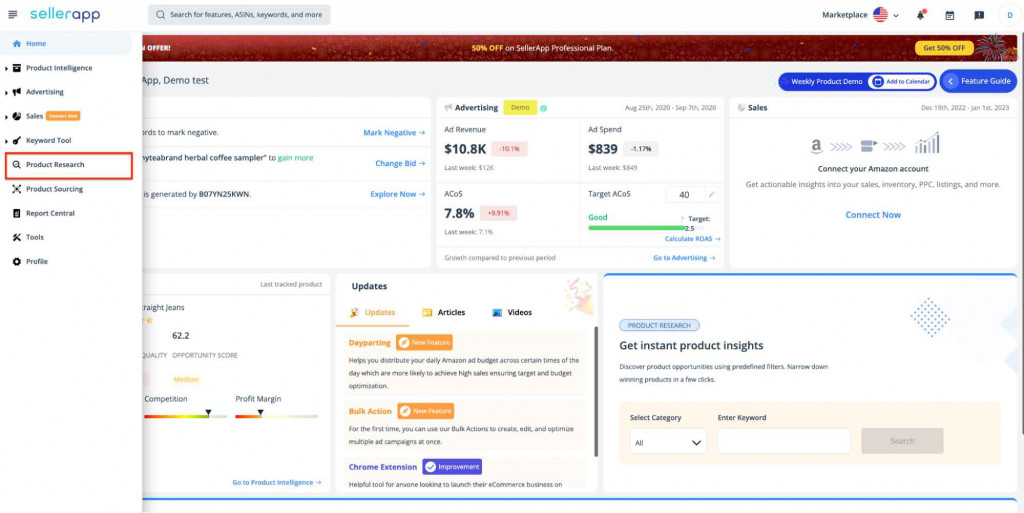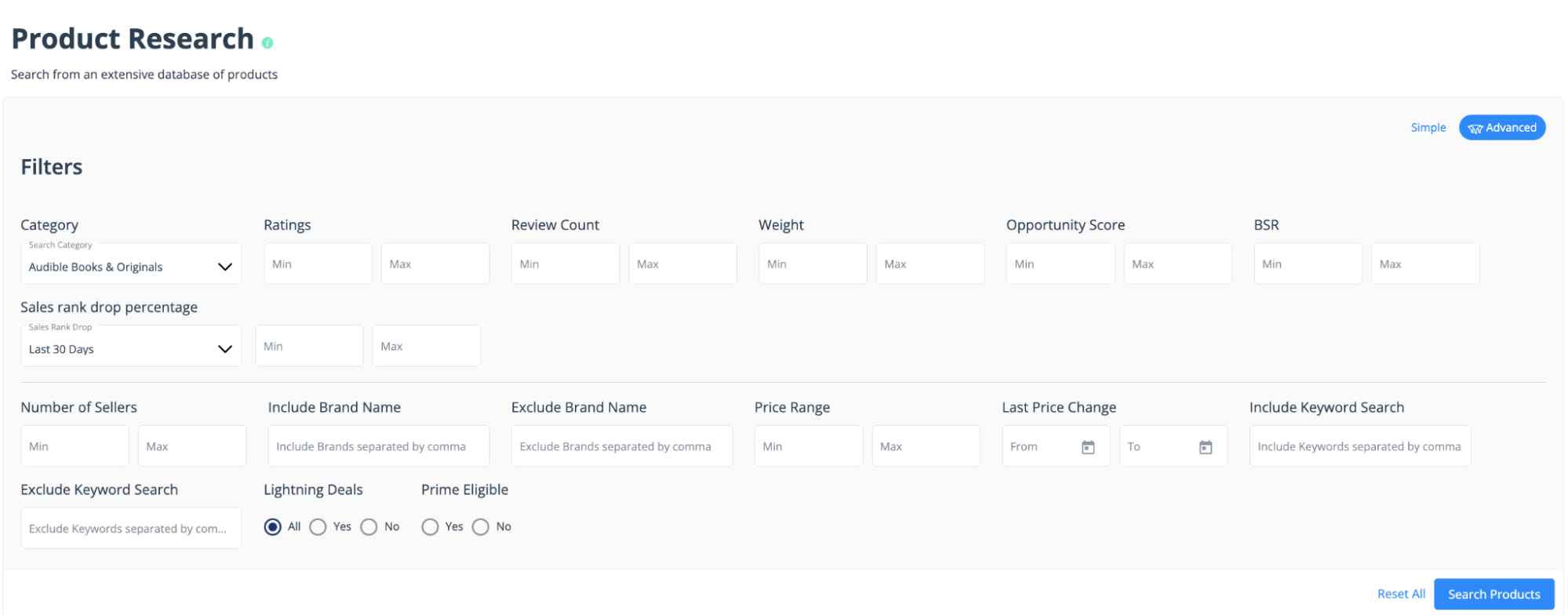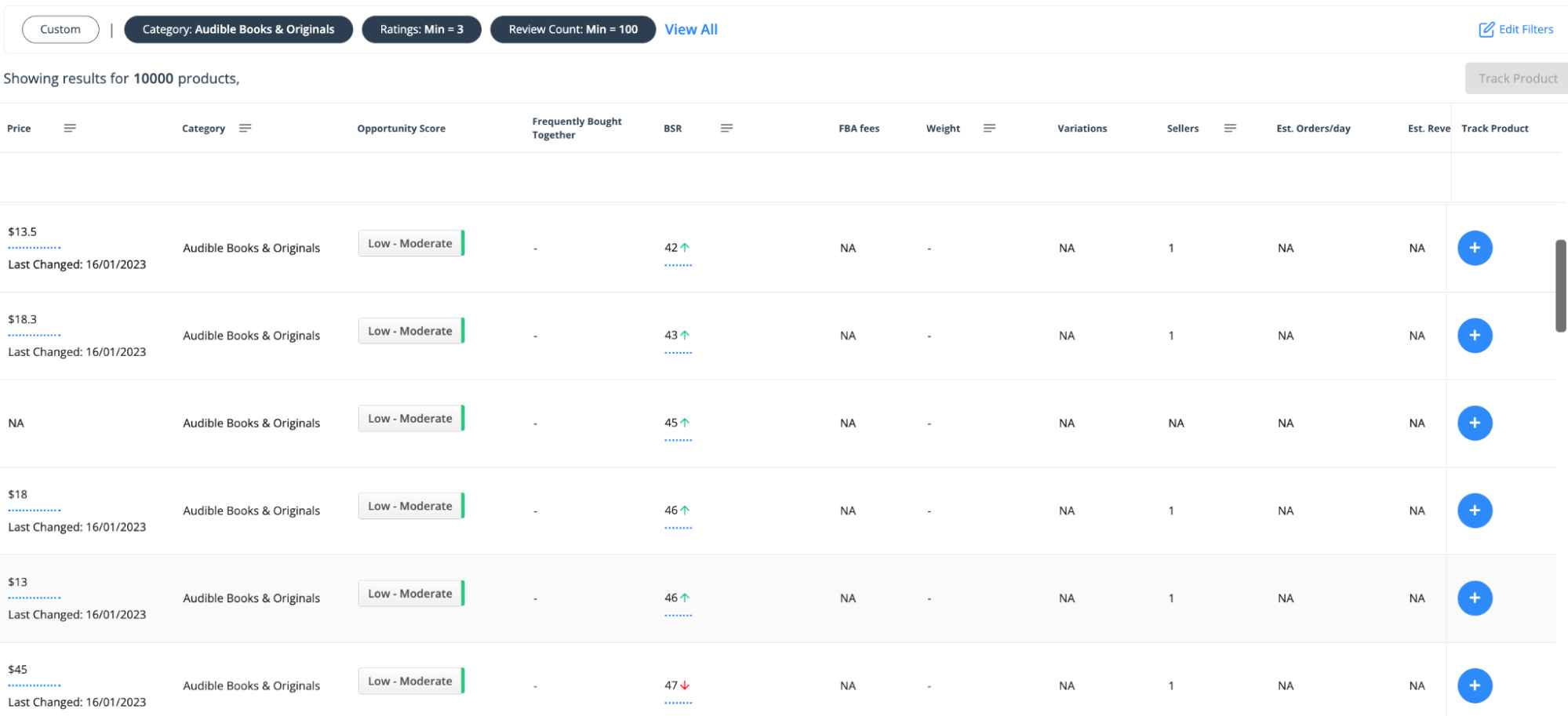How to Find Good Products to Sell Using SellerApp Product Research Tool?
Finding a profitable product to sell on Amazon requires thorough research.
You can’t just pick any product you like and sell that on Amazon.
However, researching and finding the right products to sell can be time-consuming.
With an extensive database of 35 million products, the SellerApp product research tool makes the process 100 times easier without any hassle.
Quick Guide:
- What is product research?
- What are the benefits of product research
- What metrics to look at during product research
- A step-by-step guide to research products using SellerApp
What is Product Research?
Whether you’re just starting out and launching your first product or you’re a seasoned seller looking to add new offerings, product research can be beneficial for you.
With product research, you can learn more about the target audience, determine the perfect pricing of the product, and identify ways to improve the products to stand out from the crowd.
This can be especially important in highly competitive markets where customers have many options to choose from.
What are the benefits of product research?
There are multiple benefits of product research. For instance:
- Product research helps you find a profitable niche and find a sellable product in that niche.
- It allows you to gather information about the market price and helps you set up competitive pricing while maximizing profits.
- You can also learn more about the target customer’s pain points from the product reviews and create a product that meets the needs of customers better.
Overall, product research is an important part of your business that helps you choose the right product and create a profitable business.
Metrics to look at during product research
Here are some of the metrics you should consider when researching a product.
- Ratings
- Price
- Category
- Opportunity Score
- Frequently Bought Together
- BSR
- FBA Fees
- Weights
- Sellers
- Est. Orders/day
- Estimated Revenue
Rating:
It indicates the number of reviews the product has in the listing. A higher number of reviews generally means the product has a high number of sales. You can find useful information about customer requirements and market gaps by reading the reviews of the top-selling products.
Price:
This is the current selling price of the product.
This gives you an idea of the profit margins you could make by comparing the sourcing costs and the current selling price.
Category:
This indicates the category of the product.
Opportunity Score:
The opportunity cost gives you an idea of how good the product is for selling on the Amazon marketplace.
A high opportunity score indicates better product performance and larger scope to sell on Amazon.
Frequently Bought Together:
It suggests the ASINs that are frequently bought together with the current product.
Best Sellers Rank (BSR)
Amazon gives every product a score based on the sales velocity. You can get an idea of the estimated sales of the product from this BSR rank.
The lower the product’s BSR, the better its sales. For example, a product with a BSR rank of 10 has much higher sales than a product ranked 100.
FBA Fees:
These are the fees charged for Amazon to fulfill orders, including packing and shipping costs, inventory costs, etc. These fees depend on the size and width of the product you’re selling.
Weight:
It shows the weight of the product. It’ll help you calculate the FBA fees on Amazon and accurately calculate the profit margin for the product.
Variation:
It shows the number of variations of the product.
Seller:
It gives you the total number of FBA and FBM Sellers of the product. It’s a good metric to understand the Buybox competition.
If a product has multiple sellers, then it’s highly competitive. On the other hand, if the product has good potential with only one or no seller, it’s a gold mine.
Estimated Orders/day:
It’s the estimated average number of orders in a day. It gives you an idea of the selling potential of the product.
Est. Orders/Day = Est. units ordered in a month / Days in a month.
Estimated Revenue:
Est. Revenue/Day = Effective price of unit x Est. units sold in a month / Days in a month.
It gives you an idea of how much money the product can make on Amazon.
Now that you know the essential metrics, let’s see how to use the Product Research tool to find a profitable product for your business.
How to find products using the SellerApp Product Research tool?
Here’s a step-by-step guide to conducting product research with the SellerApp Product Research tool.
- Log in to the SellerApp dashboard » Go to Product Research from the left sidebar.

- Choose the category, and enter a keyword to begin the research.

- You can also enable Advanced filters to speed up the research process..

- From the list, identify products with high Opportunity Scores, low ratings, less number of sellers, and high estimated revenue.
- Once you identify products with these criteria, click on the plus (+) button on the right corner to track the product.

Next, use the Product Intelligence tool to evaluate the quality of the listing, identify top-performing keywords, and research similar products to assess the profitability of the market.
Product Intelligence can be accessed directly from the Product Research dashboard, allowing you to quickly navigate to different sections of the tool.

By utilizing these features, you will be able to make more informed decisions and choose a product with a higher chance of success and profitability, with limited competition.
What to do next?
Once you’ve selected your product, it’s time to do some keyword research. This will help you identify the most profitable keywords to include in your product listing on Amazon.
Read the Keyword Research guide to learn more.
Free Tools
Want to learn more?
10 Better ways to do Amazon Product Research
How to find Best Selling Amazon products – A complete guide
Still have questions?
If you’re a bit lost, hit up the help team or chat with us to find answers to your query.


